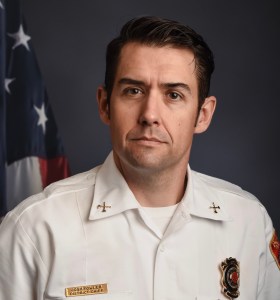
“Every soldier, regardless of rank, position, and MOS [Military Occupational Skill] must be able to shoot, move, communicate, and survive in order to contribute to the team and survive in combat. You should master these basic selected combat tasks as well as other tasks that your unit may deem necessary.”
If you’re former military, the title should bring back fond memories that were once pounded (and are now forever burned) into your frontal lobe.
Shoot – Move – Communicate – Survive
While it’s hard to pinpoint exactly where the origins of this well known infantry skill came from, it is used by all branches of service that have placed “boots on the ground” in any theater. So what can we learn from our military counterparts that pertains to HazMat? A lot, actually.
Although the background of Shoot, Move, Communicate, Survive comes from a military perspective, the lessons learned from these principles can span all organizations (HazMat included). These lessons are not limited to combat, however. Rather they are practiced in one form or another, every day.
This will be the first installment of a series based on the lessons learned from the battleground and how HazMat leaders can best utilize the information gleaned.
Defining Success
Before moving on, we must first consider the definition of success. If success is determined by promotions received, ribbons, medals and/or letters of commendation for efforts at an incident, then the lessons of this piece will be irrelevant. However, if success is measured through mitigating an incident with minimal impact to the environment and/or community and keeping your personnel safe, then please continue reading.
Shoot
“The most dynamic of the basics is shooting, and shooting well requires technique, accuracy, effect on target, and an understanding of what you are shooting at. This is a complex skill set, including everything from rifles/artillery to submarine-launched precision-guided missiles and close air support. Those that are doing the shooting and those that are directing the shooting need to be trained and exercised constantly. And, if we are going to work effectively in a joint and combined team environment, all the players involved need to practice working together. These are skills that oxidize quickly if not exercised, and that need to be sharp when employed.”
Shooting is more than just lobbing rounds down range. It means placing fire effectively on a target. More importantly, it’s going into combat and performing what is required with accuracy and consistency (and consistency is crucial). The mission of the infantry in combat is similar to HazMat personnel in operations. The enemy is most certainly different, but the end goal is the same – neutralization.
Like the infantry, HazMat personnel do not operate alone. There are multiple support units working in the background, but the infantryman/HazMat technician is at the heart of it all, and the rest of the team was created to support him or her. What is essential and of the utmost importance is that the infantryman/HazMat technician do his or her part. “They must be in the right place with the right support at the right time and must have clear instructions on what he or she is to do.”
Thus, the central question is whether the leader has prepared their operations and support personnel adequately.
Leaders:• Are your HMRT members ready for the next incident?– Are they well trained and proficient in their respective skill set (i.e., have they trained to the point to where they cannot get “it” wrong)?– Similarly, are your support personnel up to speed on what is expected of them while on a HazMat scene?• Are you training with all agencies involved?– The time to learn the players is not in the middle of an incident.• Have you clearly and accurately communicated to all involved (internally and externally)?– Are your expectations for your team members and support staff explicit or implicit?– Do not communicate so that you are understood. Communicate so that you cannot be misunderstood.
In this installment, we have discussed (in brief) the importance of Shooting. Shooting is hard, but Moving is harder and that will be the subject of the next article in our series.
Stay tuned…
Check out more from Chief Fowler HERE.

About the Author
Josh Fowler is the District Chief of Beaumont Fire/Rescue’s 52 district in Beaumont, Texas. He is the program manager for the department’s HAZMAT team and Technical Response/Recovery Group. He has 18 years on the job and has served as a rescue specialist and technical information specialist with Texas Task Force 1 since 2006. Josh has been married to his best friend, Courtney, for 19 years and together, they have 6 children



